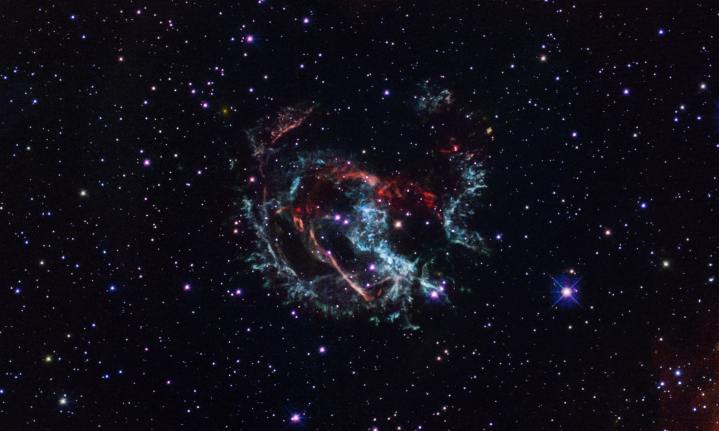
When a large star reaches the end of its life, it explodes in an enormous outpouring of energy called a supernova. As the shockwave from the explosion travels out into space, it creates a remnant that can persist for thousands of years. One such remnant has been imaged by the Hubble Space Telescope, and researchers have tracked its origin back to a supernova that occurred 1,700 years ago.
To work out the age of remnant 1E 0102.2-7219, the Hubble researchers compared images of it taken 10 years apart. By comparing the two, they could see how clumps of ejecta (or knots) were spreading out over time. And by running this rate backward, they could work out the time at which the supernova must have occurred.
This result differs from previous attempts to pinpoint the age of the remnant, which used data from different cameras. By using data from the same camera, the new result is more accurate.
“A prior study compared images taken years apart with two different cameras on Hubble, the Wide Field Planetary Camera 2 and the Advanced Camera for Surveys (ACS),” research team leader Danny Milisavljevic of Purdue University explained in a statement. “But our study compares data taken with the same camera, the ACS, making the comparison much more robust; the knots were much easier to track using the same instrument. It’s a testament to the longevity of Hubble that we could do such a clean comparison of images taken 10 years apart.”
When the supernova occurred, it also sent the crushed heart of the star — a neutron star — zipping off into space. The researchers estimate that the neutron star is moving at more than 2 million miles per hour.
“That is pretty fast and at the extreme end of how fast we think a neutron star can be moving, even if it got a kick from the supernova explosion,” fellow team leader John Banovetz said.
The researchers have identified an object which might be the neutron star in question, but they aren’t sure if it definitely is the object they’re looking for just yet.
“More recent investigations call into question whether the object is actually the surviving neutron star of the supernova explosion. It is potentially just a compact clump of supernova ejecta that has been lit up, and our results generally support this conclusion,” Banowetz said.



